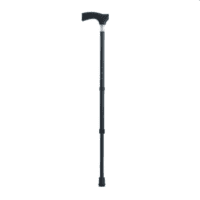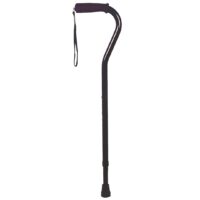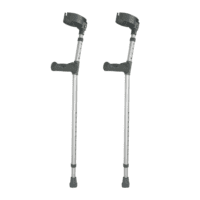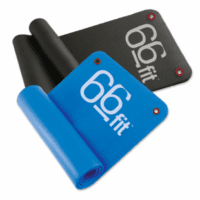Avascular Necrosis of the Femoral Head
Article by John Miller

Avascular Necrosis of the Femoral Head
What is Avascular Necrosis of the Femoral Head?
Avascular Necrosis of the Femoral Head, also known as Osteonecrosis, is a medical condition that affects the upper leg bone, specifically the femoral head. This condition occurs when the blood supply to the femoral head diminishes, leading to the death of the bone tissue. Over time, the bone may collapse, causing severe damage to the hip joint.
This condition typically affects individuals between the ages of 20-50 years old. However, the risk of developing Avascular Necrosis can be reduced by maintaining a healthy lifestyle. Avascular Necrosis often develops as a result of an underlying health issue or previous injury. Therefore, it is important to seek medical attention if you experience any symptoms, such as pain, stiffness, or limited mobility in your hip joint.
If left untreated, Avascular Necrosis of the Femoral Head can lead to long-term disability and chronic pain. Therefore, early diagnosis and treatment are essential. Treatment options may include medication, physical therapy, or, in severe cases, surgery. Consult with your healthcare provider to determine the best course of action for your individual needs.
What Causes Avascular Necrosis of the Femoral Head?
Avascular Necrosis of the Femoral Head can occur due to either traumatic or nontraumatic reasons. Traumatic avascular necrosis often arises from dislocated hips, where the femoral head becomes dislodged from its joint. In fact, up to 20% of people who suffer from hip dislocation develop Avascular Necrosis of the Femoral Head.
Nontraumatic avascular necrosis can be caused by various issues, including excessive alcohol consumption, chronic corticosteroid use, and blood clots/damage to the arteries that supply blood to the femur. The exact pathophysiology of how chronic corticosteroid and alcohol use are linked to Avascular Necrosis remains uncertain. However, overuse of these substances can cause the accumulation of fatty substances within blood vessels, leading to their narrowing and reduced blood flow to the femoral head. This reduction in blood supply can cause the bone tissue to die and undergo necrosis.
Avascular Necrosis of the Femoral Head can also be caused by certain diseases such as Gaucher’s Disease, diabetes, HIV/AIDS, sickle cell disease, pancreatitis, and autoimmune deficiencies/diseases. Additionally, medical treatments such as chemotherapy/radiation therapy, hypertension, vasculitis, and Caisson Disease can increase the risk of developing Avascular Necrosis. It is important to seek medical attention if you experience any symptoms to determine the cause and receive appropriate treatment.
What are the Symptoms of Avascular Necrosis?
Avascular Necrosis of the Femoral Head is a progressive condition that may not present symptoms in the early stages. However, as the condition progresses, patients may experience significant pain and limited hip range of motion. This pain can radiate down the length of the leg and become more pronounced when pressure is placed on the affected area, such as during walking.
In the early stages, Avascular Necrosis can be challenging to diagnose as its symptoms can mimic other conditions affecting the hip joint. Therefore, a detailed clinical history and thorough physical examination are essential in identifying the underlying cause of hip pain. Other symptoms may include stiffness, limping, and decreased mobility in the affected hip.
If you experience persistent hip pain, especially if it worsens over time and limits your mobility, seek medical attention promptly. Early diagnosis and treatment can prevent the condition from progressing and may lead to a better prognosis.
How is Avascular Necrosis Diagnosed?
Diagnosing Avascular Necrosis of the Femoral Head can be challenging, given its symptom overlap with other conditions affecting the hip joint. Once other potential causes have been excluded, diagnostic imaging of the hip is necessary to confirm the diagnosis.
The gold standard for diagnosis is magnetic resonance imaging (MRI), which is highly accurate in detecting the early stages of Avascular Necrosis. Researchers and radiographers have also proposed a classification system based on plain x-rays, known as the Ficat system, to help diagnose the condition.
Other scans such as bone or computed tomography (CT) scans may also be useful in specific stages of the injury. Once diagnosed, MRI can also be a valuable tool in monitoring the progression of the condition and the effectiveness of any treatment options.
If you are experiencing hip pain or limited mobility, consult with a healthcare professional. They will assess your condition and determine if further diagnostic testing, such as imaging, is necessary to identify the underlying cause of your symptoms. Early diagnosis is critical in preventing the condition from progressing and may lead to a better prognosis.
Avascular Necrosis Treatment
Avascular necrosis is a complex condition to treat and requires an individualised approach. Conservative treatment with physiotherapy has proven to be relatively ineffective for avascular necrosis. Although conventional treatment aims to decrease the weight-bearing load through the head of the femur (usually by implementing crutches), research has shown that the condition progresses in 1-2 years. Without definitive treatment, 70% to 80% of all avascular necrosis of the femoral head cases will progress and inevitably undergo surgery.
There have been nonoperative treatment options proposed. These treatment options are implemented before the femoral head collapses, and they are still in the early stages of research and development. Trials for various electromagnetic, acoustic stimulation or pharmaceutical modalities have varying success. One of the most well-known and successful early treatments is core decompression, where pressure inside the femoral head is decreased by drilling holes into the femoral head to create channels for new blood vessels to nourish the affected areas of the hip or by filling the drill canals with healthy bone from another body part. This technique has proven successful, especially in early-stage avascular necrosis, based on preoperative and postoperative MRI studies.
Surgical interventions include joint-preserving surgeries like osteotomy or bone reshaping, or total hip replacement, depending on the severity and stage of the condition. The primary goal is always to preserve the natural femoral head instead of replacing it.
It’s important to seek the advice of an orthopaedic specialist for individualised treatment options. Your doctor may suggest a combination of treatments, and the decision as to which treatment to select will depend on the stage of the avascular necrosis, in combination with the clinical evaluation of the patient.
Rochedale - Call 38410277
Book Online: RochedaleSalisbury - Call 32751044
Book Online: SalisburySandgate - Call 32691122
Book Online: SandgateIntroduction to Hip & Groin Pain
Hip and groin pain affects a wide array of individuals, from athletes to the elderly. Understanding the common causes and treatments of this pain is vital for maintaining overall well-being and mobility.
Common Causes of Hip Pain
- Hip Joint Pain: This includes conditions like hip osteoarthritis, where the hip joint undergoes wear and tear, leading to inflammation and pain.
- Hip Labral Tear: A tear in the ring of cartilage surrounding the hip joint socket, often causing sharp pain during movement.
- Femoroacetabular Impingement (FAI): An abnormal hip joint shape that can lead to labral tears and arthritis.
- Stress Fracture: Small cracks in the hip bone, often due to overuse.
- Avascular Necrosis: Loss of blood flow to the femoral head, leading to joint destruction.


Lateral Hip Pain and Its Causes
- Greater Trochanteric Pain Syndrome: Inflammation of the tissues surrounding the hip.
- Gluteal Tendinopathy: Inflammation or irritation of the gluteal tendons.
- Trochanteric Bursitis: Inflammation of the bursa near the hip joint.
Groin Pain: Different Types and Causes
- Adductor-Related Groin Pain: Injuries to the muscles on the inner thigh.
- Osteitis Pubis: Inflammation of the pubic symphysis, often seen in athletes.
- Iliopsoas-Related Groin Pain: Strain or injury to the hip flexor muscles.
Other Muscle-Related Pain
- Piriformis Syndrome: Compression of the sciatic nerve by the piriformis muscle.
- Muscle Strain: Overstretching or tearing of muscle fibres.
- Core Stability Deficiency: Weakness in the core muscles, affecting hip stability.
Systemic Diseases Affecting the Hip
- Osteoporosis: Bone weakening, increasing fracture risk.
- Rheumatoid Arthritis: An autoimmune disease causing joint inflammation.
- Fibromyalgia: Widespread muscle pain and tenderness.
Referred Pain Sources
- Sciatica: Pain radiating along the sciatic nerve, which runs from the lower back through the hips and down the legs.
- Lower Back Pain: Can refer pain to the hip area.
- Pinched Nerve: Nerve compression in the spine or hip area.
Hip Surgery: A Solution for Severe Cases
- Hip Replacement: A surgical option for severe hip arthritis or damage.
What's New in Hip & Groin Pain Research?
Recent studies suggest the importance of tailored exercise programs in managing hip and groin pain. Physiotherapy techniques focusing on strengthening and stabilising the deep hip rotators and core muscles have shown significant improvements in pain management and mobility.
What to Do? Seeking Professional Advice
If you're experiencing hip or groin pain, it's crucial to consult with a physiotherapist or doctor.
They can assess your condition, provide a personalised treatment plan, and guide you through exercises tailored to your specific needs.
Conclusion
Hip and groin pain can significantly impact your quality of life. However, with the right knowledge and professional guidance, managing and overcoming this pain is achievable.
Rochedale - Call 38410277
Book Online: RochedaleSalisbury - Call 32751044
Book Online: SalisburySandgate - Call 32691122
Book Online: SandgateRelated Articles
- Groin Pain Management - Expert advice on managing groin pain, covering causes such as adductor tendinopathy and femoroacetabular impingement.
- Hip, Groin & Buttock Pain FAQs: Symptoms, Causes, Treatments - Answers to frequently asked questions about hip, groin, and buttock pain, including symptoms, causes, and treatments.
- Hip Labral Tear - Information on hip labral tears, their symptoms, and treatment options.
- Piriformis Syndrome - Understanding & Physio Treatment Tips - Insight into piriformis syndrome, a condition causing buttock pain and how physiotherapy can help.
- Trochanteric Bursitis - Hip Bursitis: Causes & Treatments - An article explaining the causes of hip bursitis and offering treatment solutions.
- Groin Strain - Discusses groin strains, their symptoms, causes, and treatment methods.
- Gluteal Tendinopathy: Causes, Symptoms, And Treatment - Offers insights into the causes and treatment of gluteal tendinopathy.
Hip, Groin, Buttock Pain FAQs
Welcome to our comprehensive FAQ section, designed to address your concerns about hip, groin, and buttock pain. Here, we aim to provide clear, accessible information to help you understand the potential causes of your discomfort and the various treatment options available. Our physiotherapy experts have compiled a series of questions and answers to guide you through common issues, from hip impingement to sciatica, and everything in between. For more in-depth exploration, we've linked to related articles on our website, allowing you to delve deeper into each topic.


Hip Pain FAQs
Dealing with hip pain can be challenging, impacting your mobility and quality of life. Explore our detailed articles for insights on diagnosis, treatment options, and the importance of hip core muscles in maintaining joint health.
Lateral Hip Pain FAQs
Lateral hip pain, including conditions like gluteal tendinopathy and hip bursitis, requires targeted treatment strategies. Discover effective physiotherapy approaches to manage and alleviate your pain.
Groin Pain FAQs
Groin pain can significantly affect your ability to perform daily activities. Learn how to recognise serious symptoms and find effective relief methods through our expert advice.
Buttock Pain FAQs
Buttock pain, including conditions like SIJ pain and sciatica, can be debilitating. Our articles offer insights into symptoms, causes, and comprehensive treatment options to help you recover.
Conclusion
Our FAQ section is designed to be your go-to resource for hip, groin, and buttock pain. Whether you're dealing with a temporary discomfort or a chronic condition, understanding your symptoms and knowing the best treatment options is crucial. Remember, while our website provides valuable information, consulting a physiotherapist for a tailored diagnosis and treatment plan is always recommended. Explore our related articles for more in-depth knowledge and take the first step towards a pain-free life today.
Related Articles
- Greater Trochanteric Pain Syndrome (GTPS) - Readers can learn about the causes and management of pain near the greater trochanter, which is closely related to lateral hip pain.
- Trochanteric Bursitis - Hip Bursitis: Causes & Treatments - This article explains the causes of hip bursitis and offers treatment solutions, relevant to those experiencing lateral hip pain.
- Gluteal Tendinopathy: Causes, Symptoms, And Treatment - Offers insights into the causes and treatment of hip tendinitis, a condition linked to lateral hip pain.
- Hip Adductor Tendinopathy - Effective Physio Solutions - Focuses on groin pain caused by inflammation or degeneration of tendons in the hip region, directly relevant to the groin pain FAQ.
- Hip Flexor: Iliopsoas Groin Pain: Causes And Treatment - Provides detailed information on hip flexor issues, which can cause groin pain, making it highly relevant to readers of the original article.
- Hip & Groin Pain Guide: Causes, Treatment, Physio Advice - A comprehensive guide on hip and groin pain, covering common causes and treatments that align with the article's topics.
- Piriformis Syndrome - Understanding & Physio Treatment Tips - Discusses piriformis syndrome, a condition causing buttock pain, which is directly related to one of the SEO keywords.
- What Is Hip Impingement? - Explains hip impingement, a condition causing hip and sometimes groin pain, providing valuable insights into potential causes of the reader's discomfort.
- Sacroiliac Joint Dysfunction (SIJ) Causes, Relief, Treatment - Relevant for readers experiencing buttock pain, as it covers SIJ pain, a topic mentioned in the original article.
- Hip Arthritis - While not directly mentioned in the FAQ sections, hip arthritis can be a source of hip pain, making this article useful for readers wanting to understand more about hip conditions and pain management.


























































